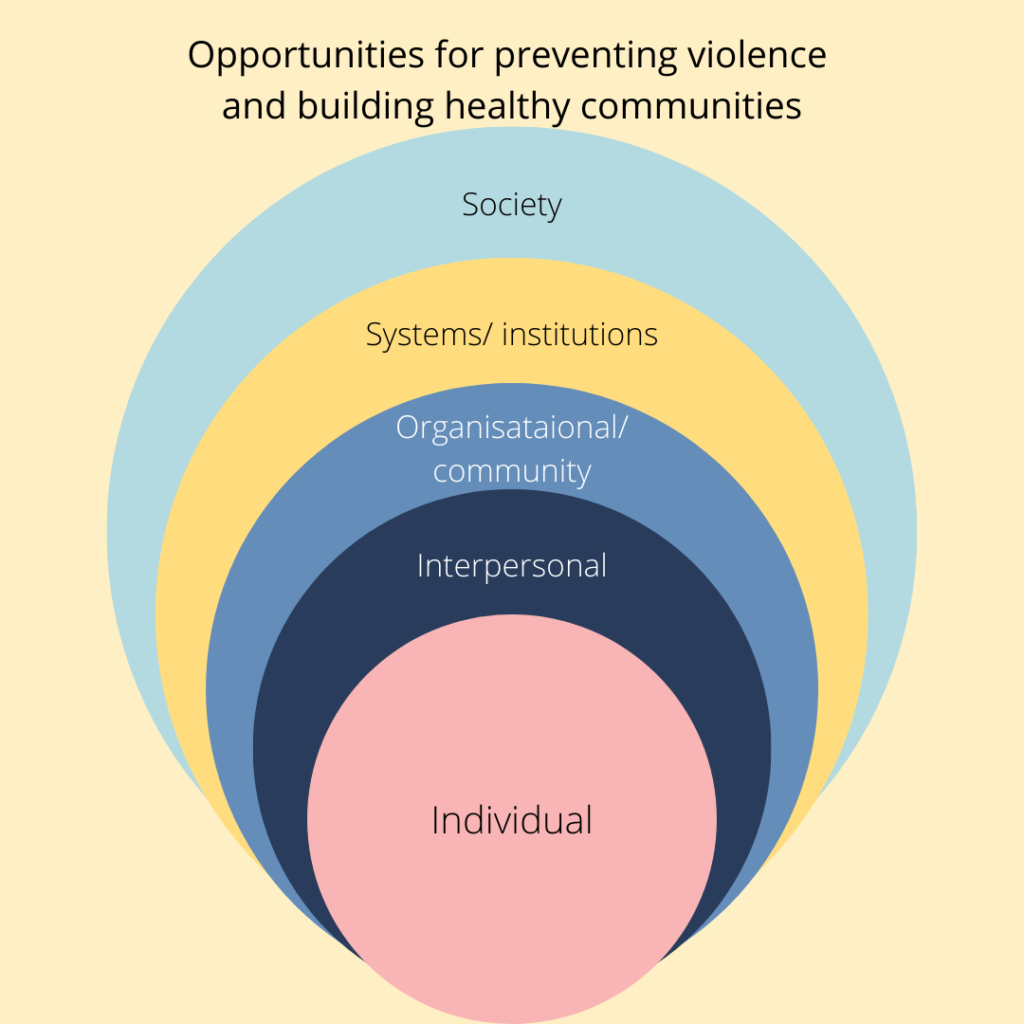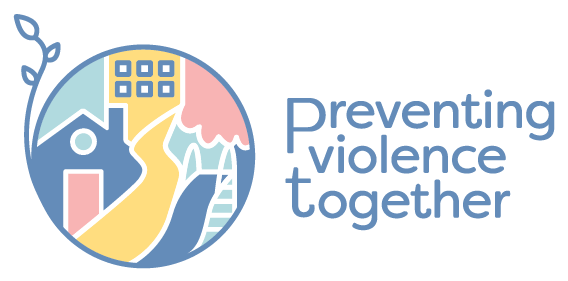A bystander is non-participant observer to an event.

Bystanders can remain non-participant observers and be passive bystanders, they could possibly interact and make things worse by adding to the problem, or they can take action in some way that will be helpful and be an Active Bystander.
Here are the steps for becoming an Active Bystander:
Step 1: Know what bystander action is
In the primary prevention of violence against women, bystander action is defined as:
“Safe and appropriate actions taken to challenge the drivers of violence against women – that is, to challenge:
- The condoning of violence against women.
- Men’s control of decision-making and limits to women’s independence in public and private life.
- Stereotyped constructions of masculinity and femininity.
- Disrespect towards women, and male peer relationships that emphasise aggression.”((Our Watch (2017). Bystander research snapshot report.))
Here are some examples of bystander action:
Bystander action at work (click to expand)
Bystander action in public spaces (click to expand)
Bystander action for youth (click to expand)
Bystander action online (click to expand)
Step 2: Understand the barriers and enablers to being an Active Bystander((Adapted from: Kistler, T., Stuart, G. L., & Cornelius, T. L. (2021). Barriers to Bystander Interventions for Sexual Assault: Impact of Personal History of Sexual Victimization. Journal of Interpersonal Violence. https://doi.org/10.1177/08862605211023491; VicHealth (2012). More than ready: Bystander action to prevent violence against women in the Victorian community. Victorian Health Promotion Foundation (VicHealth), Carlton, Australia; Our Watch (n.d.). Become an active bystander. https://handbook.ourwatch.org.au/resource-topic/how-to-engage-with-others-about-violence-against-women/become-an-active-bystander/))
What prevents people from taking action?
- Diffusion of responsibility: “Someone else witnessing this will do something”
- Ambiguity/perceived norms: “Nobody else is doing anything, so this must be normal”
- Rigid adherence to traditional roles: “Guys are just like that”
- Power dynamics: “That person is my superior, so challenging them might have consequences for me”
- Not knowing how to intervene: “I’m not sure what to do, what if I make it worse?”
- Safety concerns: “What if the person retaliates against me for intervening”
- Impression management: “If I intervene, someone might think “X” about me”
What helps people to take action?
- Knowledge about what constitutes sexism and harassment and the gendered drivers of violence against women
- Awareness of the harms of violence against women
- Organisational or peer support and encouragement
- Empathy for the victim
- Perceived responsibility and skills to intervene
- Personal belief in gender equity
There are many and varied ways to take action to disrupt or prevent violence and promote respectful relationships. Actions at each level make a difference in influencing social change.
For example, on a personal level, you might choose to do a Bystander Action training with PVT (coming soon- sign up to our newsletter to stay updated). On an interpersonal level you might buy books for girls that promote STEM or adventure, or check in on a friend whose new relationship seems unsafe. Action in your workplace might include having appropriate anti-violence or anti-harassment policies in place and resources available, and so on.
Step 3: Draw from your arsenal of strategies to effectively intervene
How you decide to take action in the moment will depend on many factors (as established in the barriers and enablers set out above). The good news is that there isn’t just one way to take action.
Bystander action typically involves one of three approaches:
Disrupt (take action in the moment)
For example:
- Make a commotion or distraction
- Let the person practicing the behaviour know it’s disrespectful and asks them to stop
- Use your body language to communicate you do not agree with their behaviour












Support (offer support to the affected person)
For example:
- Check in if the person’s ok post-event
- Let the person know it wasn’t their fault/ that the behavior is not ok
- Ask the person if they want to leave with you
Report (involve other people)
For example:
- Ask a friend for advice
- Report to HR, the Police, or other appropriate channel
- Delegate in the moment to a person in a position of authority
Depending on your skills, confidence and the context of the interaction, your approach may be subtle or more intense and direct (as demonstrated by the examples).
It’s important to prioritise your safety when considering what action to take. It’s also important to remember that feeling unsafe and feeling uncomfortable are not the same.
Step 4: Be prepared to deal with backlash and resistance
Resistance to social change occurs on a spectrum from denial and more passive attempts to maintain the status quo, to more aggressive strategies to interrupt change (such as backlash). Resistors also occur across a continuum.

Resistance is a sign that change is happening and should be expected. Preparing for resistance and backlash will mean you will feel more confident in taking more direct bystander action.
Step 5: Reflect
Reflection allows you to continually learn from and improve your practice. Your response won’t always be perfect. Reflection allows you to come up with other game plans and strategies for the future.
“Do the best you can until you know better. Then when you know better, do better.”
—Maya Angelou
Step 6: Know the different spheres of your life where you can take action to prevent violence and build healthy relationships
There are myriad opportunities to disrupt and prevent violence against women across the many spheres that constitute the delicate equilibrium of what is our life. Action at each level makes an impact and contribution to social change. For example, on an individual level, you might decide to take PVT’s Bystander Action training (coming soon- sign up to our mailing list to stay updated). On an interpersonal level you might buy books for your daughter that promote STEM and adventure, or you might check in with a friend who appears to be in an unsafe relationship. In a workplace action might look like having appropriate anti-violence or anti-harassment policies and resources, and so on.

More resources
For more resources, check out our resource library.
—
